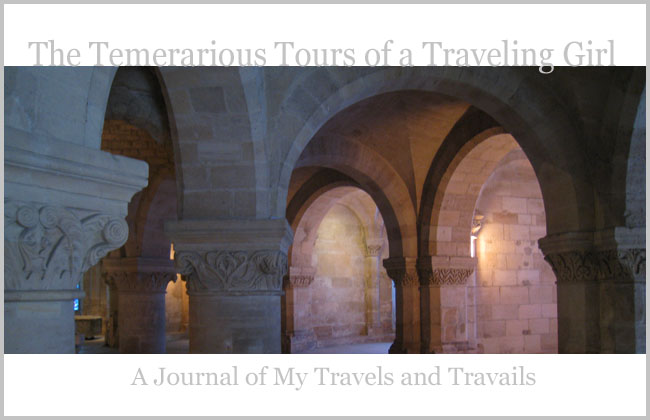-------------------------------------------------------------------------------

The Louvre, from the Champs-Elysees.
As we walked down the Champs Elysees towards to the Louvre, it began to sink in that I am, actually, in Paris. The Louvre and the area surrounding it were quite crowded, my least favorite aspect of cities. The group of us found a place to eat at a reasonable price near the Louvre and had dinner, then headed back to the museum for four hours of exploring. The Louvre itself is massive and it’s next to impossible to see the whole collection, even in an entire day.

The Louvre.
I made a beeline for the Italian paintings and was fortunate enough to get to see not only the Mona Lisa (which I find excessively overrated), but three other paintings by Leonardo da Vinci, four by Andrea Mantegna, as well as an altarpiece by Cimabue, one of the artists often cited as marking the turning point in art from the medieval to the earliest beginnings of the Italian Renaissance.

Altarpiece by Cimabue.
Over. Rated.


Te Louvre also had a painting by Paolo Uccello and a portrait of Baldassar Castiglione, one of the “big three” writers of the Italian Renaissance.
The man himself, Baldassar Castiglione.
The Louvre is pretty unique among large museums in that they allow non-flash photography, a nice concession, but which runs the risk of tempting patrons to spend more time photographing the art than appreciating it in person, an impulse which I myself had to be careful not to succumb to. After spending an obscene, but not nearly long enough, time in the Italian section, I decided to find the Louvre’s two most famous statues - the Winged Victory of Samothrace, and the Venus d’Milo, both of which are stunningly beautiful in person.


Venus d'Milo.
On the way, I passed two of Michelangelo’s sculptures intended for the tomb of Julius II. The Louvre has two of the “Dying Slaves” which Michelangelo originally sculpted for the grand second version of the tomb which was never brought to fruition and about which he felt slighted for the rest of his very long career.

The French monarchs built the part of the Louvre which now houses the museum’s collection in the sixteenth and seventeenth centuries, but the Louvre originally served as a fortress, begun in the last decade of the twelfth century.

Remains of the medieval part of the building are still accessible under the later building.

The building itself is beautiful and provides a wonderful place to house such a vast and spectacular collection of art.
The museum was almost unbearably crowded when we arrived at 6:30, but within about two hours, the crowds had begun to thin, making for a much more enjoyable experience. We wandered through the Northern European art, where I was ecstatic to see six paintings by Hans Holbein the Younger, including his portrait of Erasmus.


As we continued through the later Northern art, we encountered some very strange modern art displayed next to the Old Masters, which in my opinion severely damaged the viewing experience as it was distracting and completely inappropriate to have right next to paintings by Rembrandt and his contemporaries.

 View of the Eiffel tower from the Louvre, just as the tower began to sparkle at dusk.
View of the Eiffel tower from the Louvre, just as the tower began to sparkle at dusk.The Louvre, with Pei's pyramid, at dusk.




No comments:
Post a Comment